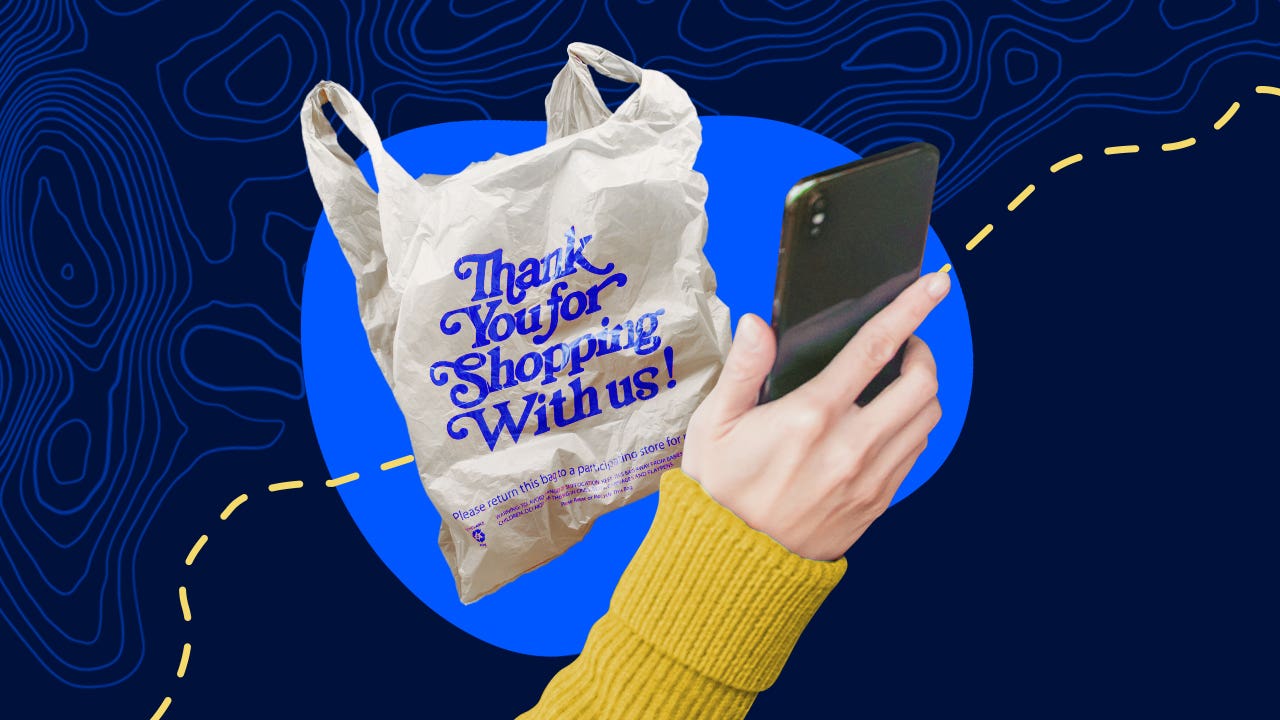Americans are making regretted impulse buys on social media — why it’s a challenging time with surging inflation

Social media is enticing users to make impulse purchases — and the price is often regret.
Nearly half (49 percent) of social media users in a Bankrate survey from July said they’ve made an impulse purchase of a product they saw on a platform they use. Even worse, nearly 2 in 3 (64 percent) said they wished they hadn’t made at least one of those buys.
“Some days it seems like everyone but you just bought a new car, is on a European vacation or is eating out at the fanciest new restaurant,” says Lisa Fischer, chief lending and growth officer at Mission Lane. “Seeing images and advertisements like this can make someone feel insecure about their own financial situation and subsequently cause them to spend more just to feel like they belong.”
That habit could break the bank now more than ever, with inflation at a 40-year high and a more than 50-50 chance of a recession by 2023. Prices on common impulse purchases such as apparel, footwear and jewelry have all jumped over the past 12 months, by 5.1 percent, 6.2 percent and 0.8 percent, respectively, according to the Bureau of Labor Statistics. Tickets to movies, theaters and concerts, meanwhile, climbed 6.2 percent from a year ago.
Following friends and influencers on extravagant vacations this summer could come with an especially heavy price. Airline fares are up a whopping 27.7 percent over the past 12 months, while lodging away from home including hotels and motels is up 1.3 percent. Using that data, a $1,000 airline ticket would’ve cost you $783.08 a year ago, while a $500 stay at a hotel would’ve been $493.58. That translates to an extra $223.34 — all to do with inflation.
Even amid high inflation, consumers are willing to spend
Impulse buy or not, data suggests consumers are still out shopping even in the face of inflation. Receipts at restaurants and retailers rose a faster-than-expected 1 percent in June from the prior month, according to the Department of Commerce.
Experts say the jump likely reflects the inflationary hit rather than a pick-up in spending, with consumer prices in July up 8.5 percent from a year ago. Yet, an elevated stockpile of pandemic savings, half-century low unemployment and rising wages have helped solidify demand — a major reason why consumers are willing to pony up more for the same amount of goods and services.
“The fact that we’re still seeing respectable numbers for goods in this context is actually one of those anti-recession signals,” says Ted Rossman, Bankrate credit card senior industry analyst. “A strong job market along with strong consumer spending is another point in the economy’s favor.”
Yet, data suggests inflation might actually be what’s enticing consumers to spend hastily. In an August Ipsos poll asking consumers how inflation is changing their impulse buying habits, more than a third (34 percent) of those who made an impulse purchase online cited the price being too good to pass up as their reasoning. Another 34 percent cited wanting to treat themselves.
Those purchases could be part of a phenomenon known as “the Lipstick effect.” The idea suggests consumers want to reward themselves — especially in tough times — but turn to little indulgences rather than extravagance.
The theory got Caelan Hughes, a Hawaii native and content creator, thinking so much about how recessions are reflected in fashion trends that it inspired her to make an Instagram poll for her more than 4,000 followers, forecasting what trends will be popular during the next recession.
One post proclaimed consumers will start crafting handmade garments out of recycled materials, rather than the 2008 trend of upcycling thrifted clothing. Nostalgia could be its own fashion statement — she predicts a resurgence in digital cameras, VCRs and VHSs — while comfortability will be key, with a potential comeback in store for long hemlines and yoga pants.
“There’s this seeking of comfort when there’s a lot of chaos, and nostalgia is such a powerful thing that it makes people feel better to remember the simple times,” Hughes says. “When the economy is doing well, opulence is so popular. I remember saving up all my babysitting money in 2006 to buy a terry cloth Juicy Couture bowler bag. By the time I graduated in 2011, I was all about ‘90s grunge and going to Goodwill. That era of showing off your wealth was just immediately so uncool.”
Why social media makes impulse purchases even harder to avoid
Spending money is easy in the era of social media and online shopping — so much so that consumers might not have the chance to fully think through every purchase they make.
Social media inherently entices people to keep up with their neighbor, in a modern-day “Keeping Up With the Joneses.” One in 4 people who post on social media (25 percent) said in Bankrate’s poll they want to appear successful on their platform, while 62 percent believe the people they follow sometimes do the same.
Meanwhile, targeted advertisements put the most coveted items right at your fingertips, while shopping experiences are often integrated within each social media app.
People also naturally want what their peers are having — and even more so when they’re actively trying to hold back, according to research from Kathleen Vohs, a professor and marketing department chair at the University of Minnesota’s Carlson School of Management.
“If you think about consumers having this conflicted state to begin with — that they want to spend money but probably know that they shouldn’t, especially with inflation — then seeing other people and the purchases they have and the experiences they’re going on is going to make that conflict feel all the worse,” Vohs says. “The more you see other people doing something you really want to do, but the more you’re holding back, the more taxing that is on your psychological state. It makes you want to do it all the more.”
Buy now, pay later could be delaying spending changes
Contributing to the temptation, experts say, is the availability of various buy now, pay later payment plans — many of which circulate on social media. These could be delaying any major behavior changes caused by inflation.
In 2021, buy now, pay later accounted for $2 per every $100 spent on e-commerce purchases, according to a May analysis from analytics firm GlobalData. Financially vulnerable households are nearly four times more likely to use buy now, pay later than healthy households, according to the Financial Health Network.
Consumer borrowing overall surged in June, jumping $40.2 billion from the prior month, according to data from the Federal Reserve. The measure mainly includes credit card balances and reached $1.125 trillion in the period, a record high.
“A consumer will often look to other ways that they can continue to maintain their existing lifestyle,” says Lauren Anastasio, director of financial advice at Stash, a financial technology firm. “It really is encouraging the acceleration of spending because you’re trying to encourage someone to purchase a product that they haven’t had the opportunity to save for yet, rather than waiting until they get their next paycheck.”
8 tips for avoiding impulse purchases you’ll later regret
The best way to avoid an impulse purchase you’ll later regret is by taking the impulsivity out of it. Carefully analyzing how you’re spending your money and what you’re buying can help you live the best of both worlds in your personal life: Treating yourself while also still making sure it fits within your budget.
1. Practice the 24-hour rule, but wait an extra day per every $100 the item costs
A long-touted personal finance rule of thumb is the “24-hour rule,” where you wait a full day before officially buying one of the items you’ve placed in your cart. The longer you wait, the more likely you might ultimately end up realizing you don’t want the item after all.
For more expensive purchases, financial experts suggest waiting even longer. Rossman proposes increasing the amount of time you put the purchase on hold by 24 hours per every $100 the item costs. A $600 Dyson would equal a six-day waiting period. A $1,200 vacation would take 12 days to fully mull over.
Anastasio often recommends waiting a full 30 days before committing to a purchase. Sometimes it’s the thrill of adding something to your cart and anticipating the item arriving in the mail that can be more exciting than owning the actual item, she says.
“Put it in your online cart and walk away,” Anastasio says. “It may help you reevaluate the value of your dollars and whether the cost of something is truly worth it.”
2. Put the money you would’ve spent in your savings account — and once you build it up, buy it
Say you wait a few days to make that purchase and realize you don’t want it after all. Your next step could be adding the money you would’ve spent to your savings account. The money is still out of sight and out of mind — but less permanently than it would’ve been, had you followed through on the purchase. If you put the money in a liquid and accessible savings account, it’s no big deal if you ultimately end up needing to withdraw the cash.
All of the cash you put into that account will only add up over time, helping you build a special “fun money” fund you can utilize the next time you decide you do want to treat yourself. Even better, you will collect interest on that money until you spend it.
3. Every time you want an item, add it to a wish list — and imagine yourself owning it in the future
Keep track of all the items you want. That Prada bag you saw your friend holding at dinner? Write it down. The new Apple Watch you saw an influencer showing off on TikTok? Make a note of it.
If you see all of the things you want in front of you, you’ll have a better idea of what you need to work toward to purchase them over time. You might also then be able to start eliminating any items that no longer speak to you.
Ask yourself, ‘How will I feel about this purchase four weeks from now?’ If you can confidently say you will be very comfortable and satisfied with the amount of money you spent on this item and you expect it will continue to bring you joy, then you can feel a pretty high level of conviction that this is something you genuinely want.
— Lauren Anastasio Director of Financial Advice at Stash
4. Don’t keep your credit card on file with online stores or apps
The ease of buying an item with the click of a button on Amazon, Instagram or your favorite store might just be further enabling your impulse purchases. Not to mention, you don’t have to type any information in order to purchase something if you’re using Apple Pay or another facial recognition payment software.
Preventing an impulse purchase you’ll later regret could be as simple as making yourself go through a few extra steps before you buy the item, such as having to get up out of your seat and grab your credit card from across the room.
“If you walk by a billboard and see a pair of jeans you like, you have to fish your phone out of your pocket, try to find the store online, search for the exact item and physically get yourself to a store,” Anastasio says. “On social media, when it’s in your feed, you’re already in the store. With these platforms, you can purchase things, and you don’t even need to leave the app to do it.”
5. Limit your screen time on social media apps or set up purchasing limits
The best way to avoid spending money is to avoid the temptation overall. It’s just like shopping in person — and how you’d go a different route to avoid driving by a restaurant or store you love.
Consider setting up spending limits either directly on your credit card or through a budgeting app. If you know you like to online shop over lunch or before bed, perhaps you should institute screen time limits for those specific periods.
“Be aware of how this impacts your thinking and try to step away from what triggers your impulse buying,” Mission Lane’s Fischer says. “Instead, occupy your free time with something that brings you joy and takes your mind off of what other people are doing online.”
6. Use round-up apps to help you build your savings
Financial technology can help you in more ways than just letting you set spending limits. Several mobile applications out there can help make it easier for you to save, whether that’s by rounding up your purchases to the nearest dollar (Qoins, for example) or by analyzing your spending patterns to help you automate your savings contributions (such as Digit).
7. Use your credit card or rewards points to fund your non-essential purchases
If you don’t have a balance and pay off your purchases every month, a credit card can actually help you limit your impulse purchases and safeguard your cash in the face of high inflation. That’s because you can find the right cash-back or rewards card for your specific spending patterns.
Rossman, for example, uses his American Express Blue Cash Preferred card to get 6 percent back on groceries and streaming services. You can turn any amount of money you build up through rewards or cash back into “fun money,” he says.
“If you got that card and committed to paying it off in full every month like using a debit card, you could save hundreds a year without much change in your behavior,” he says.
8. Avoid comparing yourself to others, and think about what really matters to you
Bankrate’s poll suggests social media is a place where people put their best foot forward — but they might not always portray their everyday reality. Social media can often make you feel like everyone else is earning more, spending more and having more fun, but you never see the full picture. Perhaps they went into debt to fund that purchase — or maybe they regret it.
Think carefully about the items that are true to you to avoid buying something just because everyone else is purchasing it, and consider following people who reflect that version of yourself.
“Remember that people often save the best highlights of their lives for social media,” Fischer says. “You’re seeing them at their very best – on vacations, at fancy dinners. This isn’t every day of their lives. Not everything you see online is how it is in reality.”
You may also like

5 ways to avoid impulse buying





